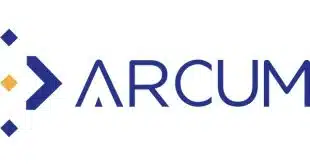The carrier-led mobile-payments consortium, news of which became publicly available on Monday, may break new ground in bringing payments based on near-field communication (NFC) to market. But it could confront major issues in attracting merchants, especially the big chain retailers looking to chop transaction costs, says one expert observer who is close to developments in the matter.
At issue for some major merchants, at least for now, is pricing and openness to new payment methods, such as smart cards, says Steve Mott, principal at Better Buy Design, a Stamford, Conn.-based payments consultancy. Mott says he has talked to merchant executives who have been exposed to the consortium’s plans and don’t like what they see. “Some of the biggest merchants view this payment alternative as derivative of the existing, bank-based interchange system, and not really moving the ball forward on coming up with a new business model,” he tells Digital Transactions News by e-mail. Mott adds that “there has been some push-back [from merchants] on the system being closed to alternative payment options.”
But if the new consortium—which reportedly includes AT&T Inc., Verizon Wireless, T-Mobile USA, Discover Financial Services, and Barclays PLC’s U.S. card unit—faces merchant resistance on pricing, it’s early days. The principals, many of which have been involved in NFC and contactless payment trials, will likely find a way to accommodate merchants’ demands for lower transaction pricing than that available on bank cards, notes Todd Ablowitz, president at Double Diamond Group, Centennial, Colo. “They’re really smart people and would know you have to come in at a really attractive price,” he says. And Mott, who has not himself seen the consortium’s pricing details, cautions the carriers may have been leading with their highest price levels to gauge reaction. “At first blush, merchants were clearly nonplussed by what they heard,” he says in a phone interview.
The consortium’s pricing, along with many other details concerning its plans, is not publicly known. Contacted by Digital Transactions News, spokespeople for AT&T and Verizon, the two largest U.S. mobile networks, refused to comment, as did a spokesman for Barclaycard U.S. A T-Mobile spokesperson said, “We have nothing to announce at this time.” Discover refused to comment beyond this statement: “Discover is always evaluating technology solutions that make things faster, safer, and more convenient for cardmembers, merchants, acquirers, and issuers.”
News about the initiative broke early on Monday with a report by Bloomberg News, though a news site called NFC Times had reported several months ago that major carriers including AT&T and Verizon were planning a mobile-payments launch based on NFC. The report on Monday came well before a planned October press release by the principles, says Mott.
According to news accounts, the venture will launch a pilot in four cities, one of which is Atlanta. Citing its own source, The Wall Street Journal on Tuesday said the trial will start some time later this summer, leading to a possible rollout by year’s end. Most news accounts indicate payments will be processed over Discover’s extensive merchant network, while Barclaycard U.S. will handle the accounts and manage settlement. It remains unclear whether the Discover payment brand will be used, though experts say this would help boost consumer usage. Also unknown is whether Discover’s Pulse electronic funds transfer network will participate.
With NFC, consumers can use their mobile phones to wave and pay at cash registers as they would with a contactless card or token. The phones are loaded with electronic wallets that can store payment card or coupon and loyalty details. Though there have been numerous NFC payment trials in the U.S., a long-running standoff between the carriers and the banks and bank card networks over how to split transaction revenues and other issues has kept the technology from commercial rollout. At the same time, handset makers have been reluctant to invest in phones with embedded NFC chips.
While the three carriers and their partners may have found a way to break this logjam, they now face the critical problem of attracting merchants, and in particular the big-box retailers whose acceptance could spark widespread consumer usage. Here the venture is off to an inauspicious start, according to Mott, with pricing that offers little or no advantage over the discount fees merchants pay for bank card transactions. “I hope the carriers, in their interests in finding a new source for revenue and profits, don’t just use cell-phone payments in the same fashion the big banks would, taking as much money as they can for what in a digital world is a pretty mundane service,” he says.
Another stumbling block for the consortium, he says, is that its mobile wallet “is closed to payment options not sanctioned or managed by the carriers.” This could mean that options that are gaining favor with some of the biggest retailers, such as PIN debit and chip-and-PIN smart cards (also known as EMV cards), could be excluded. “The one thing this implementation could do that would dramatically improve its prospects of success would be to push for totally open choices for payment options,” Mott says. “A significant step in this direction would be to endorse and accommodate EMV contactless payments. PIN debit is a must, and it would be nice for merchants to accommodate their store cards as well.”
But the tie-in with Discover could be a key advantage, says Ablowitz, since the brand is well-known and trusted by consumers. Discover has also made strides in penetrating many of the same merchants that accept Visa and MasterCard. The key question is how heavily the consortium will rely on the Discover brand. “Discover is a powerful acceptance mark that has been built up since the ‘80s.” Ablowitz notes.




